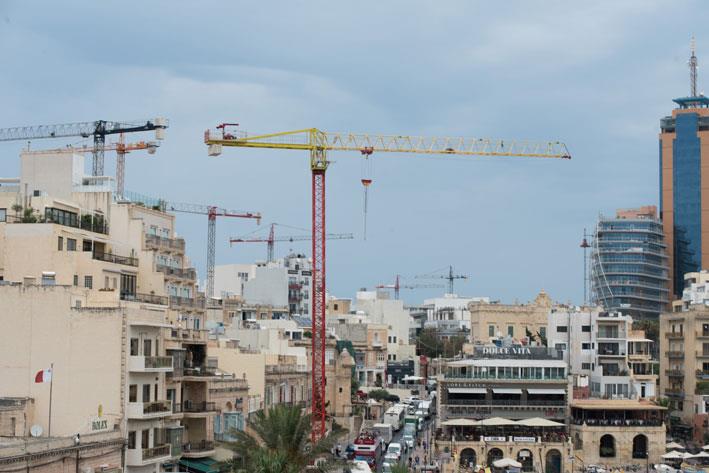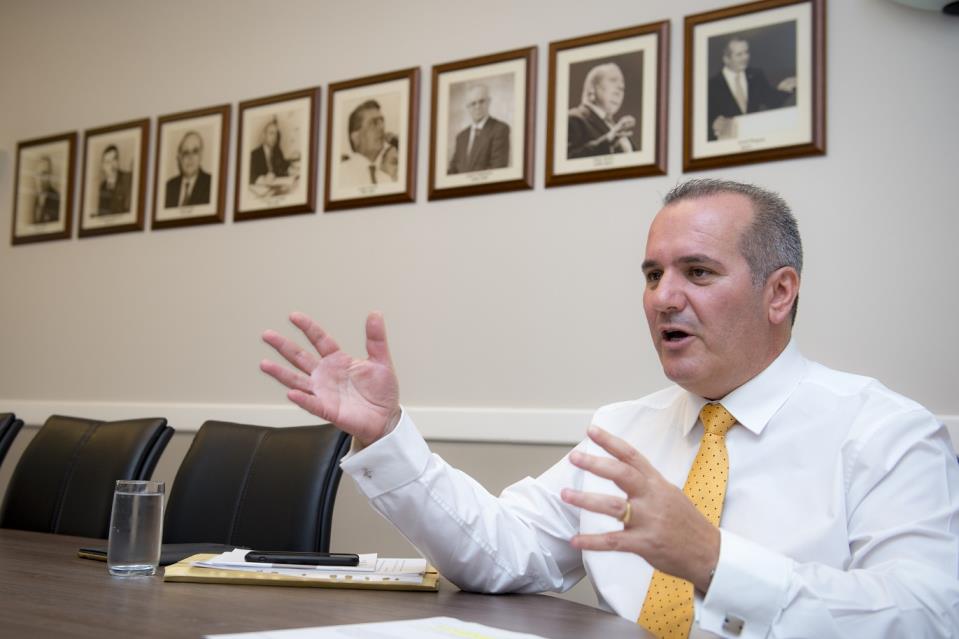The increase in reporting of workplace accidents by the media is fuelling the wrong perception that such accidents are increasing, including those in the construction industry, when in actual fact there has been a decrease in such accidents, Occupational Health and Safety Authority (OHSA) CEO Mark Gauci told The Malta Independent.
Malta's construction industry has been under fire for a number of years due to the endless list of reports of collapses, like the most recent tragedy of 54-year-old Miriam Pace, and construction site accidents, which seem to have increased over the years.
However, when asked by for the reason behind this increase, OHSA CEO Mark Gauci told that the statement 'there are escalating instances of construction accidents' is fallacious.
"What is happening is that whereas in the not-so-distant past the media only reported such instances occasionally, an increasing number of accidents are nowadays being reported, including accidents which would have had trivial consequences," he explained.
The media gets most of said reports from the police authorities who, over the years have started to report all workplace incidents to which they are called, Gauci said. "Unfortunately, this increase in reporting by the media is fuelling the wrong perception that workplace accidents, including those in the construction industry, are increasing."

Notably, a cursory look at statistics published by the authority in its 2019 report of activities shows that the total number of injuries at the workplace has been consistent since 2015 with statistics ranging between 3,112 and 3,252 each year.
One important factor to consider here is the size of the working population which has undeniably increased over the years. Since 2015 there has been a consistent decrease in injury rate which is calculated per 100,000 workers. In 2015, the rate stood at 1,569 which progressively went down to 1,281 in 2019.
Even construction accidents decreased at a considerable rate each year, as indicated in the graph which also shows how transport and storage injuries are more common than construction.
Gauci added that another point to be considered with regard to construction accident reports is that most people, including the media at times, do not distinguish between the statutory roles of the different key regulators in the field of Health and Safety, especially in so far as the regulation of the building industry is concerned.
"The scope of the OHSA Act is only directed towards the safeguarding of the Health and Safety of workers. Other issues, including the avoidance of damage to third party property, nuisances (including dust), hours when work is permitted, pedestrian safety, traffic management, and civil matters, such as loss of business through a work activity, fall outside the applicability of the Authority's Act," Gauci clarified. "Yet OHSA keeps being mentioned (and blamed) in relation to these situations."

He exemplified his case through a recent post on the Ministry of Health's website highlighting OHSA's enforcement activities over the past few months which generated the following comment; 'OHSA did not save Miriam Pace's life'.
"This comment is wrong on two counts - first of all no regulatory entity is liable for any accident that occurs and which is the result of another duty holder's failings, and secondly OHSA is not the entity responsible for the implementation of the Avoidance of Damages to Third Party Property Regulations, which are issued under the Building Regulation Act," Gauci said.
Every accident is one too many - GWU Secretary General
Despite the aforementioned figures, construction accidents are still a reality and, in the words of General Workers Union (GWU) Secretary General Josef Bugeja, "every accident is one too many."
"We did notice an increase in accidents in the last couple of years and this was attributed to the expansion in the sector. Most injury reports or complaints that we received were lack of safety procedures and misuse of equipment or of safety guards," he said.
This is why the Union believes that the construction industry needs to be unionised as there is a disconnect among the different entities within the industry.

Bugeja explained that the GWU is a member of the advisory board at the Building Industry Consultative Council (BICC), which is introducing a skill card for every construction employee, and in every collective agreement there are specific clauses regarding Health and Safety procedures, policies and representatives.
"We made major progress but I still believe that as a whole we can do much more to change the thinking and acting especially in the construction industry," he said, while expressing the importance of having the government implement the necessary changes in the industry and every other working organisation.
"Legislation is not enough, implementation and enforcement is of fundamental importance as well. Employees and employers need to understand that safety rules and regulations are there to protect their wellbeing and not to restrict their operation."
There is resistance to implement the necessary changes - Chamber of Architects President
The Malta Independent also spoke with Chamber of Architects President Simone Vella Lenicker who, together with the rest of the executive, has been very vocal on the issue of regulating the construction industry. In fact, just last month, the Chamber proposed a number of reforms within the industry.
Asked if she thinks that these proposals are falling on deaf ears, Vella Lenicker said that rather than deaf ears, there is resistance to implement certain drastic changes because there is a general lack of foresight of the immense benefits the industry will derive from them.
"We are also sensing that this lack of foresight is in part due to a lack of technical understanding on what needs to be done to truly address the problems," she said, which is why the Chamber has stepped in to fill the gap and set out a comprehensive vision itself.

She has faith that the government is just as concerned about the lives and health of workers and third parties as the Chamberand other stakeholders in the industry are; evident in the inclusion of the Chamber on the drafting of certain parts of the new legislation and regulations.
"However, it must also be said that Government promised the establishment of a new Authority in 2018, and gave a Letter of Commitment to the Chamber in August 2019 with various measures promised to be delivered within established timelines. Little of this has been actually implemented."
She believes that the issue of construction accidents is rooted in a lack of registration, licencing and classification of contractors (construction, finishes and building services), as well as a lack of building and construction regulations that ensure quality in services provided across the board.
"Both these issues lead to an approach where cutting corners goes unchecked. Until they are addressed, the industry will not move forward," she said when asked for her opinion on the fact that accidents are still occurring despite the reforms the government promised in the past.
From its end, the Chamber will remain committed to these reforms, having the majority of the profession behind the proposals of the Chamber and demanding that these are implemented without further delay.